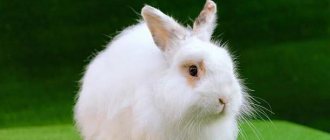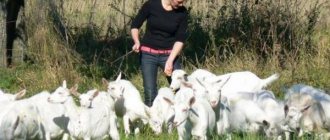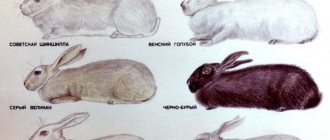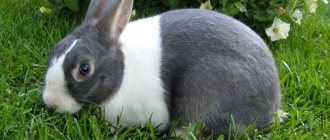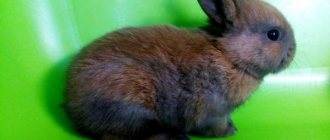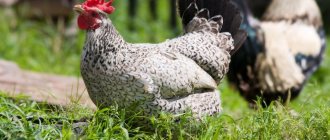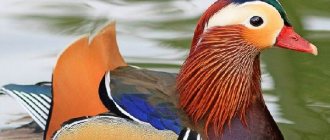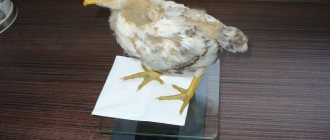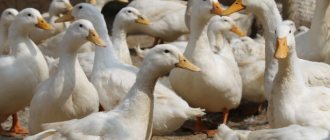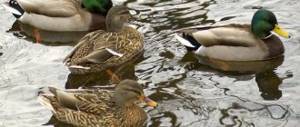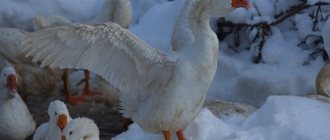Homemade, but not quite
Wild quail is a fastidious bird in terms of ambient temperature and daylight hours. This is the only species from the Galliformes order that flies to the southern regions every autumn.
Despite the fact that the quail breeds contained in the cages are domestic, complete domestication has not occurred. This means that the conditions of their detention should be close to natural.
The best performance results are achieved at stable temperature and air humidity. This can be achieved by organizing a poultry house in a confined space, that is, indoors.
General Content Rules
Quails do not like sudden changes in environment. Therefore, you should not keep quails in one place in summer and in another in winter. Such “moves” are fraught with the risk that females stop laying eggs, and the adaptation process can drag on for a long time.
In both winter and summer, the temperature of quails should fluctuate between 19-22 degrees. The acceptable minimum is 17 degrees.
If the region has a cold winter, you will have to take care of additional heating of the barn. Using convection or infrared heaters. Be sure to monitor the humidity in the room. Its optimal indicators: 55–75%.
You can read about other norms and recommendations that must be followed when raising laying quails or quails for meat in the article “On raising quails at home: for beginners and experienced ones.”
Selection and installation of lamps at home
In addition to artificial lighting, quails also need daylight. It is optimal to place the cage so that the sun falls on it during the day, and lamps illuminate it in the evening. In winter, artificial light should completely replace natural light for the inhabitants of a mini-farm.
Expert opinion
Zarechny Maxim Valerievich
Agronomist with 12 years of experience. Our best country expert.
Ask a Question
Infrared lamps are considered a cheap and convenient option. They light dimly and help maintain the desired temperature. However, they require frequent replacement.
If you plan to keep poultry for a long time, then it is wise to invest in LED lamps. They are economical to operate and shine softly. It is not recommended to place ordinary incandescent lamps in the poultry house. They warm, but do not provide ultraviolet radiation, which is necessary for all living organisms to produce vitamin D.
The lighting norm for egg production is 25-30 lux, for growing meat - 35 lux. These indicators must be observed at feeders and drinkers. Here it is worth thinking about how to properly place the lamps, depending on the type and number of cells.
See also
Description and characteristics of tenebrose quail, diet and breedingRead
Poultry house features
Area calculation
You can keep two to three dozen quails in any room. Some lovers even keep them on the balcony.
It’s another matter when the question is about creating a mini-farm. In this case, there must be at least 1000 quails. Plus - space for brooders, incubators, cages.
If you adhere to zootechnical standards, keeping 1000 heads of quail in battery-type cages requires a poultry house with an area of at least 25 m². If brooders and growth cages will be located in the same room, then another 10 m² is needed.
A ready-made room of this size is suitable for keeping quails. The most important requirement is the absence of drafts. All cracks must be sealed, for example, with polyurethane foam.
A little about building a barn
If there is no suitable premises on the plot, you will have to build one. The barn can be made of any building material that can withstand disinfection treatment: brick, slag or foam block.
Winter frosts should be taken into account. The “colder” the walls of the poultry house are, the more money you will have to spend on heating it to maintain the desired temperature for the quail.
The floor in the room must be filled with cement screed. It is better if it is reinforced. This will protect the quails from rats and small predators. It will also allow for regular disinfection.
Ultraviolet or artificial lighting
Quails and quails do not need sunlight. The farm should have artificial lighting, which can be used to change the brightness and duration of daylight hours for birds.
If the barn allocated for the poultry house already has windows, they should be darkened with something, for example, tracing paper. There is no need to nail them up tightly or brick them - in the summer they can be opened to ventilate the room.
The sun's ultraviolet rays can harm quails, so it is recommended to install light filters on the windows.
Cells
Cages with quails are installed along the long wall of the barn. It is better to make them multi-tiered to increase the density of birds per 1 m² of poultry house floor.
These cells are sold online. However, they don’t cost three pennies and it’s much cheaper to make them yourself. The article “Building a quail cage with your own hands” can help with this.
Heating
The mini-farm must be electrified. The reasons were mentioned above - artificial lighting and heating. Keeping quails in a barn without light and heat in winter may not kill them, but you definitely won’t have to wait for eggs and weight gain.
A few words about heating devices. Electric heaters come in three types:
- convection;
- infrared;
- fan heaters.
The first two types will cope with the task of heating the poultry house. The third type is not suitable for a quail farm. It operates loudly, and quails do not tolerate extraneous noise well. In addition, the heater fan creates air currents that are not needed in the room.
You can install autonomous steam or water heating in the barn, but this option will require large investments. For a large enterprise, this option is justified; for a mini-farm, such expenses are unnecessary.
Preparing a competent diet for quails
In order to raise a healthy bird from a quail, you need to create the right diet. It should be remembered that for each age category the diet is compiled separately, since the needs of these groups are different. For quails of different types of poultry farming, the diet is also significantly different.
Feeding chicks
The first food for newly hatched quails will be a hard-boiled crushed egg. Starting from the second day, the chicks’ menu includes 2 grams. cottage cheese. Gradually, the amount of cottage cheese in the mixture is increased, and the amount of eggs is reduced. The quail are fed five times a day. Chicks must always have free access to water, for which purpose a drinking bowl is placed in the cage itself.
Feeding the young
Starting from 10-11 days, the chicks are gradually transferred to compound feed, replacing cottage cheese. During this period, the quails are fed 4 times a day. The formation of the main systems of internal organs occurs until approximately 45-50 days of life of the quail
Therefore, it is at this time that it is especially important to feed mineral supplements to young animals. Purchased multivitamins are recommended, which can be purchased at any veterinary pharmacy.
They are crushed and added to poultry feed once a day. Vitamins A and B are especially important for the formation of the female reproductive system.
Feeding an adult bird
To feed adult birds, you can use special feed, developed in accordance with the needs of the animal. However, you can try making the feed mixture yourself.
To prepare it you will need:
- Wheat – 1000 gr.
- Barley – 100 gr.
- Corn – 500 gr.
- Bone meal – 5 gr.
- Vegetable oil – 3 gr.
This is a standard food recipe, to which a mineral component is added if necessary. The daily food intake for an adult is 30 grams. When feeding poultry for meat, at least 30% of the diet should be protein. It can be offered to quails in the form of minced meat and fish, cottage cheese and boiled eggs.
Mineral supplement composition:
- Shell rock – 5 gr.
- Chalk – 5 gr.
- Crushed egg shells – 5 g.
- Salt – 3 gr.
The use of ready-made feed greatly simplifies the care of quails. Home-made feed must be supplied immediately after preparation, constantly monitoring its freshness and preventing it from souring.
Basic mistakes when feeding and keeping quails
Quails have strong immunity and are not susceptible to many infectious diseases. However, improper care of them can lead to a weakened immune system. A novice poultry farmer should avoid the following mistakes when breeding quails:
- Violation of bird feeding regime. Quails need to be fed 3-4 times a day at approximately the same time. Moreover, the most difficult to digest feeds, such as grains, should be given at night so that the bird does not feel hungry before the morning feeding and does not worry. A failure in the mode will lead to disruption of the animal’s gastrointestinal tract.
- Unbalanced nutrition and lack of essential minerals will affect the productivity of the animal. A lack of nutrients is characterized by a slow gain of muscle mass and a deterioration in the quality of laid eggs.
- Feeding liquid food. Mixtures used for feeding must be dry. Otherwise, they can clog the quail's eyes and nostrils, making breathing difficult. In addition, it stains the plumage, which falls off and becomes wet.
- Unfavorable conditions for keeping birds. An excessively noisy environment, too bright light, or a draft in the room cause stress in birds and can lead to the death of the entire flock.
- Insufficiently clean cages contaminated with droppings are unfavorable for keeping quails. Many endoparasites are released into the environment in excrement. A dirty cage can lead to infection of the animals. That is why it is necessary to regularly disinfect the premises where birds are kept.
By following these recommendations, even the least experienced poultry farmer will be able to cope with raising quails at home. The resulting products will significantly diversify the owner’s menu and enrich it with new, non-standard recipes. And with particular success in breeding, the breeder may think about creating his own poultry farm and selling quail eggs and meat on an industrial scale.
How temperature and humidity affect quail performance
Quails are heat-loving birds. No wonder they fly south every autumn.
Their domesticated counterparts also need certain conditions. Poultry farmers have noticed that temperature deviations from the norm (19-22 degrees) lead to a sharp decrease in the number of eggs.
With a decrease of 5 degrees, egg laying may stop completely. This causes the quail to get sick and may die.
Higher temperatures in the barn dry out the air. If the humidity in the room is less than 50%, quails begin to drink a lot of water, refuse to feed and, as a result, stop laying eggs and gain weight.
It is necessary to monitor the humidity level in the poultry house in summer and winter. In hot weather, you need to place containers of water or hang wet rags inside the cages.
In winter, it is advisable to abandon rags, and the air dried out by heaters can easily be moistened by basins of water.
What lighting is best for quails?
It would be wrong to turn on a regular bright lamp in a barn for the whole day. If the room is too light, quails begin to behave aggressively. They peck at each other, often to death. In addition, feathers fall out and birds stop flying. Quails are most comfortable in dim light.
Experienced poultry farmers claim that using blue or red lamps reduces pecking.
In the barn where the cage is located, there must be a window so that daylight can penetrate there. But in winter this will not be enough and you cannot do without additional lighting. The best option is to install infrared lamps. They do not emit bright light, and besides, such lighting will help maintain the temperature.
Another option is LED lamps. Although they are expensive, they are economical to operate and provide soft lighting. For a small sparrowhawk, a 10-watt light bulb is sufficient.
Lighting at a quail farm
Quails lay eggs exclusively during daylight hours. The role of the sun in the poultry house is played by electric lamps. It is necessary to ensure that the birds' lights are on for no more than 12 hours at a time. Then the laying hens should be allowed to rest by making a “night” in the barn for 2-3 hours.
When fattening quails for meat, by adjusting the lighting, you can also achieve good results, simulating the autumn sun, reducing the length of daylight hours. The bird reflexively begins to eat, preparing for the “flight to the south.”
Using infrared lamps in quail cages gives good results. Their advantage is:
- stimulation of sexual development;
- increasing egg production;
- preventing aggression and, as a consequence, cannibalism;
- an additional source of heat in the cells.
Everyone knows the disinfecting properties of ultraviolet lamps, which are often used in industrial complexes. You can also use them on your home mini-farm. But for this, the quail barn must have ceilings at least 3 meters high.
Otherwise, birds may get burns to the cornea and go blind. And of course, these lamps cannot be used as constant lighting.
Optimal light conditions for quails
So, we figured out the lighting of the cage or quail house during the day. It should be dimmed for at least 15 hours, although in winter it can be left for the whole day. Now regarding night lighting. According to standards, quails rest for about 4 hours a day. But given the fast metabolism, it would be wrong to completely turn off the lights at night. Over such a long period of time, the bird will become very hungry and will eat too much in the morning, which can lead to blockage of the crop. In order for the bird to gain weight well and lay eggs, it is recommended to leave the lamps in dim mode for the whole day. The night is divided into 2 periods lasting 2 hours. Then the light mode of the quails will be something like this:
- 6 am-12 midnight - lighting is on;
- 12 o'clock at night - 2 o'clock - the lights are off, the quails are resting;
- from 2 to 4 am – the lights are on again, the birds are active and eating;
- from 4 to 6 a.m. – second rest break, lights off.
With this light regime, quails will show high egg production, grow well, and gain weight.
Ventilation in the poultry house
The farm owner must take care of the supply of fresh air to the poultry house. Carbon dioxide concentrations in the air above 0.25% are detrimental to quails. It is also prohibited to exceed:
- ammonia - more than 15 mg/m³;
- hydrogen sulfide – 5 mg/m³;
- dust – 2-5 mg/m³.
Regulatory documents on zootechnics establish standards for air speed in a quail house (meters per second):
The exhaust pipe is installed under the very ceiling of the barn, away from the cages with quails. To regulate the speed of air circulation, it is better to install a fan. But it must work as quietly as possible so as not to disturb the laying hens.
The supply pipe should be lowered to a height of about 20 cm from the floor. In some cases, it can be replaced by through holes in the walls. They need to be covered with fine mesh to prevent predators or rats from getting inside.
A properly designed and installed ventilation system will help keep livestock healthy and productive.
Mini farm hygiene
Like any livestock farm, quail housing needs regular disinfection. The simplest remedy for cells is “Whiteness”. An effective solution for walls is lime mortar.
It is also necessary to take care of the disinfection blockade system. Shoes can introduce various infections into the poultry house, which can cause an epidemic in birds. To prevent such a nuisance, at the entrance you need to install a box with contents soaked in a disinfectant - a disinfectant barrier.
A person servicing cages with birds should make it a rule, every time he enters the poultry house, to stand with both feet in this box to disinfect shoes.
Modes in a brooder with quails
The owner of quails must take care of the constant replenishment of the herd with young producers.
Since domestic quails are completely devoid of the instinct to hatch, the hatching of the chicks has to be entrusted to an incubator. Modern devices, equipped with automation, cope with this task quite well. How to use them correctly is described in “Rules for incubating quail eggs.”
The poultry farmer should take further care of the hatched babies. To do this, they are placed in a brooder. It supports special temperature and light conditions for quail. How to build a chick box yourself is described in the article “Constructing a quail brooder.”
An infrared lamp at 650 nanometers is excellent as a source of light and heat. The table shows temperature and light indicators:
How to keep quails in winter without heating
In regions with mild winters, amateur poultry farmers practice keeping quails without heating. And, although egg production is significantly reduced, this is, in general, possible.
To do this, you need a well-insulated room that does not allow the temperature to drop to critical values. The building should be located in a dry place protected from the wind. It is good if it is protected on the north side by another outbuilding or house.
You also need straw bedding on the floor of the cage. Sometimes it is practiced to keep quails in an enclosure with bedding on a cement floor. This option is not suitable for breeding offspring. However, birds feel quite comfortable burying themselves in straw and basking under lamps.
As a rule, such methods of keeping quails are used by summer residents who want to receive eggs from their birds in the summer and simply maintain the livestock in the winter. The nuances associated with this topic are well written in the article “Rules for keeping quails at the dacha in the summer.”
Feeding quails in winter
To ensure that birds do not get sick in winter and continue to lay eggs well, you need to pay attention not only to their living conditions, but also to their diet. It should consist of the following components:
- Compound feed. First of all, the nutrition of quails should be balanced and rich in vitamins. Therefore, it is recommended to give them feed. Today, there are several types of industrial feed for feeding quails, but you can also use homemade feed.
- Mixtures. If the poultry farmer does not have the opportunity to prepare or purchase complete high-quality compound feed, then the birds are given feed mixtures prepared independently. The composition of feed mixtures must maintain a balance between proteins, grains, vitamins and minerals.
The basis of the diet for quails in winter should be:
- millet;
- sorghum;
- all types of crushed grain (except rye);
- wheat;
- rice and pearl barley.
It is useful to give quails steamed and crushed grain legume feeds:
In winter, quail are in dire need of daily consumption of chopped greens, which can be replaced with grated carrots or a variety of vitamin supplements. Of all the variety of greens, it is preferable to give quails:
- tops of carrots, turnips and beets;
- green onions;
- clover;
- nettle;
- cabbage and dandelion leaves;
- alfalfa.
Due to the lack of fresh grass in winter, birds are given dried herbs prepared in summer. The necessary greens are pre-chopped. To do this, you can chop it with a knife or scroll several times in a meat grinder. But in rare cases, they also produce whole leaves - quails cope well on their own with suspended tops of carrots, turnips and beets.
In winter, it is also useful to feed quails with chopped cabbage leaves, which contain many vitamins and microelements that are beneficial for birds.
More is written about feeding quails here.

